Laser Hair Removal in Johannesburg
Search and Compare the Best Clinics and Doctors at the Lowest Prices for Laser Hair Removal in Johannesburg
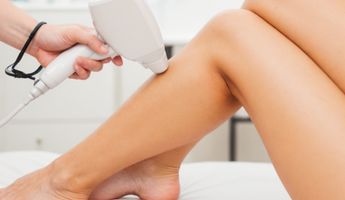
Find the best clinics for Laser Hair Removal in Johannesburg
No pricing info available
India offers the best prices Worldwide
Price: $ 3
From 9 verified reviews
Ginelle Makhado, 24 August 2020
I been a patient at the face and body clinic, Dr was amazing and Natalie helped me through surgery and recover. The amazing 3 month post surgery program me kept me motivated to heal and lost over 7kgs, changed my lifestyle and fixed my Vitamen deficiency which stalled my weight loss. I had my surgery at the height of covid pandemic and I felt safe with all the precautions in place. ❤️
- Home
- South Africa
- Johannesburg
Compare Before & After Photos of _procedure_photos.phpLaser Hair Removal

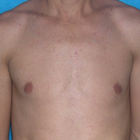
Front view
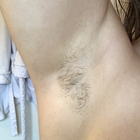
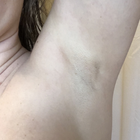
Front view
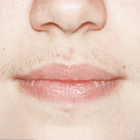
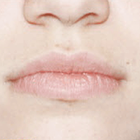
Front view
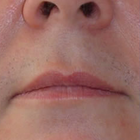
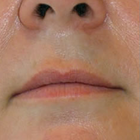
Front view
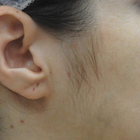
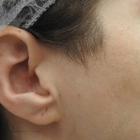
Half-side view

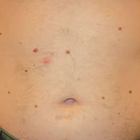
Front view
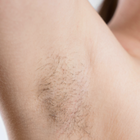

Front view
WHY US?
At Medijump, we're making medical easy. You can search, compare, discuss, and book your medical all in one place. We open the door to the best medical providers worldwide, saving you time and energy along the way, and it's all for FREE, no hidden fees, and no price markups guaranteed. So what are you waiting for?

Free

Best Price

Widest Selection

Risk-Free
What you need to know about Laser Hair Removal in Johannesburg
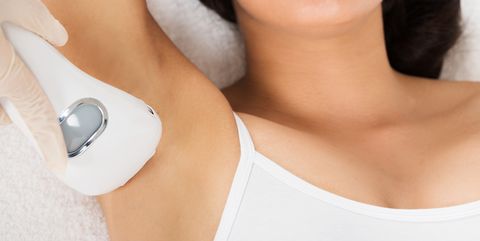
Gone are the days of having to constantly shave, pluck or wax unwanted hair from your body. We all know how very time consuming these things are, not to mention the pain you have to endure when you pluck or wax your unwanted hair.
Today, we have several options we can choose from before we can bid goodbye to such undesirable body hair. One of the more popular hairs removal procedures is Laser hair removal. The process involves targeting the hair follicles with laser light in order to damage them and prevent any future hair growth. In this, laser energy gets absorbed by the hair pigment, resulting in damage to the hair follicle. Such a procedure prevents hair growth in the future, and the effect could be permanent in many cases.
Laser hair removal can be done in any part of your body. The most common areas include the bikini area, underarms, legs, back, and face.
What is the cost of Laser Hair Removal in Johannesburg?
The expenditure for a Laser Hair Removal within Johannesburg can vary greatly on the basis of numerous aspects. The cost is typically dictated by the expanse of the area undergoing treatment; processes carried out on larger surfaces such as the back or legs could be pricier than those on smaller zones like the upper lip. Other influencing factors include the type of laser technology applied, the count of required sessions, and the credibility and expertise of the clinic or professional administering the treatment.
Considering the wide spectrum of prices across different treatment providers, it's immensely advantageous to undertake comprehensive research and consultations prior to selecting a specific clinic. Some clinics may present package deals for multiple sessions, which could be more economically viable compared to paying for each session separately.
Bear in mind that despite the initial high cost of laser hair removal seeming daunting, the long-term benefits frequently render it a cost-efficient resolution. When you contemplate the ongoing costs of other hair removal options like waxing, shaving, or depilatory creams accumulated over a lifetime, laser hair removal can actually save you both time and money in the grand scheme.
What does a Laser Hair Removal Procedure Involve?
During the procedure, your doctor will press a hand-held laser instrument to the skin area where your unwanted hair is. The laser equipment will be adjusted according to the color, thickness, and location of your hair as well as your skin color. Depending on the laser used, you will be asked to wear eye protection to protect your eyes from the laser beam. A cooling gel or a special cooling device will also be used to protect the outer layers of your skin and lessen the risk of side effects. Your doctor might also apply topical anesthetic to your skin to reduce your discomfort.
Your doctor will then activate the laser; the beam will pass through your skin and to your hair follicles. The heat from the laser beam will now damage the hair follicles; as a result, it will prevent hair growth. You might feel a slight discomfort like a warm pinprick but it will be soothed by the cooling gel or device.
How Long Should I Stay in Johannesburg for a Laser Hair Removal Procedure?
Laser hair removal is done in small areas of your body like your upper lip usually lasts for only a few minutes. In larger areas such as your back, it might take an hour or more. After your procedure has been completed, you will be given ice packs, anti-inflammatory cream or cold water to ease your discomfort. You can go home right after you have undergone the treatment. Furthermore, stitches are not required in this procedure. You may need to schedule multiple sessions, usually 4-6, spaced four to six weeks apart for optimal results.
What's the Recovery Time for Laser Hair Removal Procedures?
Recovery time after a Laser Hair Removal is typically minimal. Minor redness and swelling may occur but usually resolve within a few hours to a few days. According to health experts, it's essential to avoid sun exposure and use sunscreen to protect the treated area during the recovery period, as skin can be particularly sensitive after treatment. For the first two days, it may seem like the treated area was sunburned. Applying a cool compress and moisturizer will help you with your discomfort. If your face was treated, you will not be allowed to wear makeup if your skin is blistering.
It usually takes 2 to 3 weeks to see any difference. You may schedule your next treatment after 4 or 6 weeks. Note that you need to continuously undergo the treatment until your hair stops growing; this may take 8 to 12 treatments before acquiring full results.
What sort of Aftercare is Required for Laser Hair Removal Procedures?
The heat from the laser will stay in your skin for 24 hours so you need to avoid the gym, sauna, or even taking a hot shower. Doing so will increase the risk of bacteria multiplying and giving you spots. Strictly avoiding the sun before and after your procedure is essential, it is also recommended for you to avoid chemical peels for 2 weeks after your procedure. Applying ice packs to the treated area can also reduce swelling or discomfort.
What's the Success Rate of Laser Hair Removal Procedures?
A Laser Hair Removal technique often has a high success rate, with many people reporting a considerable reduction or full eradication of unwanted hair growth. The patient's skin type, hair colour, and the particular body part being treated are all important variables that can affect how well the operation works. For instance, the technique usually works best on those who have dark hair and pale complexion since this allows for optimal targeting of hair follicles.
Additionally, the Laser Hair Removal's success rate is highly impacted by the practitioner's training and experience. Up to 90% of individuals who undergo the operation under the expert guidance of a qualified specialist will experience a permanent hair reduction. It's always best to consult with a qualified professional at a trusted clinic for personalized advice on the expected outcomes and success rate of laser hair removal for your specific circumstances.
Are there Alternatives to Laser Hair Removal Procedures?
If for any reason, you deem the Laser Hair Removal unfitting, there are alternate routes worth your consideration. These include standard techniques like shaving, waxing, and tweezing, which can be effortlessly performed at home. However, be aware that these options may not ensure enduring solutions to undesired hair growth.
That's where professional treatment alternatives make their entrance. Electrolysis, a process that involves a very slender needle infiltrating each hair follicle to obliterate it using an electrical charge, is one such course of action. Though electrolysis could be more labor-intensive than laser hair removal, it has earned a reputation for its efficacy on all varieties of skin and hair.
Furthermore, there exist depilatory creams designed to chemically disintegrate hair at the surface level of the skin. The outcomes of these creams usually extend beyond the typical duration of shaving effects, but they necessitate routine application. As for any novel skin product, conducting a patch test 24 hours before usage to check for allergic reaction is invariably advised.
Lastly, there's IPL (Intense Pulsed Light) that, despite bearing resemblance to laser hair removal, employs a broad spectrum of high-intensity light influencing the deeper structures of the skin. IPL can additionally serve the purpose of treating skin pigmentation issues as well as acne.
Determining the choice among these alternatives will depend on your specific requirements, lifestyle, and financial plan. It's also vital to discuss your prospective options with a healthcare specialist before settling on a final verdict. They are equipped to dispense comprehensive information and counsel, personalized to your distinct circumstances.
How should you prepare for the Laser Hair Removal Procedure?
Completely getting rid of undesirable hair in certain areas of your body can be quite rewarding and it can certainly boost your self-esteem. Laser hair removal eventually eliminates the need for plucking, shaving or waxing. The common body area where this treatment procedure is done includes armpits, bikini line, upper lip, and legs. Although this treatment procedure is possible in almost all parts of the body, the eyelid area is one exemption.
In choosing the right doctor for your procedure, you have to take note of the following:
- A doctor who specializes in dermatology or cosmetic surgery and has experience with laser hair removal.
- If a physician assistant or a licensed nurse will execute the procedure, make sure that your doctor is available on-site for supervision.
Before your actual treatment procedure, you have to schedule a consultation with your chosen doctor. During your consultation, costs, expected results, and possible risks will be discussed with you. Furthermore, your doctor will also review your medical history and determine whether this procedure is the appropriate treatment for you. You may also be advised to do the following before your scheduled day:
- Avoid sun exposure, typically 6 weeks before your treatment and use sunscreen daily.
- Lighten your skin. Your doctor might also prescribe a skin bleaching cream to lighten your skin if you have a darker skin complexion.
- Avoid plucking, waxing electrolysis 4 weeks before your treatment. These other methods of hair removal might disturb your hair follicle.
- Avoid blood-thinning medications like aspirin or anti-inflammatory drugs.
- Shaving and trimming are recommended a day before your treatment procedure. It gets rid of the hair above the skin that can be burned but at the same time, it leaves the hair shaft intact below the surface.
What are the Potential Risks of Laser Hair Removal?
On the rare occasion, a few individuals could encounter minor side effects like skin irritation and changes in pigment. Skin irritation may present as temporary discomfort, redness and swelling at the site of treatment, generally fading away within hours post procedure. Changes in skin pigmentation could involve skin darkening or lightening. These changes are usually temporary but may turn permanent in rare instances.
Moreover, infrequent but severe risks encompass blistering, scarring, alterations in the skin texture, graying of hair in the treated area, and an unusual surge in hair growth surrounding the treated regions. Keep in mind that these risks more likly escalate if the procedure is conducted by an untrained or novice provider or if post-treatment care guidelines are not adhered to rigorously. For instance, sun exposure weeks leading up to and post treatment can amplify the probability of skin lightening.
Whilst the information presented here has been accurately sourced and verified by a medical professional for its accuracy, it is still advised to consult with your doctor before pursuing a medical treatment at one of the listed medical providers
No Time?
Tell us what you're looking for and we'll reachout to the top clinics all at once
Enquire Now

Popular Procedures in Johannesburg
Prices Start From $1

Prices Start From $5

Prices Start From $16

Prices Start From $5

Recommended Medical Centers in Johannesburg for Laser Hair Removal

- Interpreter services
- Translation service
- Religious facilities
- Medical records transfer
- Medical travel insurance
- Health insurance coordination
- TV in the room
- Safe in the room
- Phone in the room
- Private rooms for patients available

- Interpreter services
- Translation service
- Religious facilities
- Medical records transfer
- Medical travel insurance
- Health insurance coordination
- TV in the room
- Safe in the room
- Phone in the room
- Private rooms for patients available

- Interpreter services
- Translation service
- Religious facilities
- Medical records transfer
- Medical travel insurance
- Health insurance coordination
- TV in the room
- Safe in the room
- Phone in the room
- Private rooms for patients available

- Interpreter services
- Translation service
- Religious facilities
- Medical records transfer
- Medical travel insurance
- Health insurance coordination
- TV in the room
- Safe in the room
- Phone in the room
- Private rooms for patients available

- Interpreter services
- Translation service
- Religious facilities
- Medical records transfer
- Medical travel insurance
- Health insurance coordination
- TV in the room
- Safe in the room
- Phone in the room
- Private rooms for patients available

- Interpreter services
- Translation service
- Religious facilities
- Medical records transfer
- Medical travel insurance
- Health insurance coordination
- TV in the room
- Safe in the room
- Phone in the room
- Private rooms for patients available

- Interpreter services
- Translation service
- Religious facilities
- Medical records transfer
- Medical travel insurance
- Health insurance coordination
- TV in the room
- Safe in the room
- Phone in the room
- Private rooms for patients available

- Interpreter services
- Translation service
- Religious facilities
- Medical records transfer
- Medical travel insurance
- Health insurance coordination
- TV in the room
- Safe in the room
- Phone in the room
- Private rooms for patients available

- Interpreter services
- Translation service
- Religious facilities
- Medical records transfer
- Medical travel insurance
- Health insurance coordination
- TV in the room
- Safe in the room
- Phone in the room
- Private rooms for patients available

- Interpreter services
- Translation service
- Religious facilities
- Medical records transfer
- Medical travel insurance
- Health insurance coordination
- TV in the room
- Safe in the room
- Phone in the room
- Private rooms for patients available
Laser Hair Removal in and around Johannesburg
About Johannesburg
Johannesburg is the most populous as well as the largest city in South Africa. There is a lot to see and do in Johannesburg. Home to the Apartheid Museum, it is the perfect place for anyone who loves history and wants to learn more about the country’s past. There are also MOAD and MuseuMAfriCA that exhibit the city’s art and history. Other than the museums, the metropolitan city has a number of other things to do, such as enjoying Gold Reef City, shopping in its many markets, and visiting The Cradle of Human Kind.
Today, people have found a new reason to visit Johannesburg: medical tourism. Although it is not as widely known as other medical tourism destinations in other parts of the world, the city has seen a steady rise in medical tourists. The urban city features public and private medical centers with the highest standards, well-trained medical practitioners, and cutting-edge technology. Most of the medical centers have English speaking doctors, nurses, and staff, so there is no language barrier for foreign medical tourists. Plastic surgery, particularly tummy tuck, is one of the more popular procedures since it is much cheaper here than in Western countries.
Popular Areas in Johannesburg
While Johannesburg is not a popular tourist destination, there are a number of things to see and do in the city. The city is mostly known as Nelson Mandela’s home and has an array of astonishing museums. Those who love history and want to learn about the country’s struggle will enjoy the Apartheid Museum. It exhibits the story of apartheid through photographs, film footage, clippings, newspaper, and artifacts. Mandela House in Soweto Street is also worth a visit. It was once Nelson Mandela’s home. The museum showcases photographs, paintings, as well as awards and recognitions earned by Nelson Mandela.
One of the most popular places is the Lion Park. The safari park offers an amazing chance to watch lions and several other animals up close. There are also other activities such as animal interactions and hand-feeding a few animals, such as ostriches and giraffes. Other than the Lion Park, Pilanesberg National Park is famous among wildlife enthusiast. The national park is filled with opulent ecosystem and wildlife. Tourists can experience a safari and spot lions, rhinos, elephants, leopards, zebras, and over 300 bird species in their natural habitat.
Johannesburg is popular for its art and you must visit the Maboneng Precinct where you will find art-studios and shops selling art pieces. Wits Art Museum is another great place to admire African art. If you want to know more about the culture, Lesedi Cultural Village is the best place to go. Here, tourists can learn more about traditional South African culture and a chance to encounter people of Zulu, Pedi, Ndebele, Xhosa, and Basotho origin. Other places including SAB World of Beer, Gold Reef City, Holly Hill, Market Theatre, Constitution Hill, and Mary Fitzgerald Square are also a must-visit.
Weather and Climate in Johannesburg
Johannesburg experiences a subtropical highland climate. The summer, which runs from October to April, is characterized by hot days with thundershowers in the afternoon and cool evenings. The temperature is mostly mild during the summer. January is one of the hottest months, with an average maximum daytime temperature of 25.6 °C. The summer has an extreme UV index, sometimes reaching as high as 14-16. Therefore, tourists must wear sun-protective clothing and apply sunscreen during the day to avoid sunburn.
In the winter, the city enjoys sunny days and cold nights. This season is dry, and the average maximum temperature is around 16 °C. In June and July, the temperature can drop to 4.1 °C and occasionally drops below freezing at night. The freezing temperature causes frost, but snow is rare. It is advisable to bring warm clothing during this season.
Getting Around in Johannesburg
International visitors usually arrive at O. R. Tambo International Airport, also known as Johannesburg International Airport. It is Africa’s busiest airport and the primary airport that serves domestic and international travel. The airport connects South Africa with various cities all over the world, including London, Abu Dhabi, Atlanta, Singapore, and Sydney. It is the hub for South Africa’s largest domestic and international airlines, South African Airways. Budget airlines such as FlySafair, Mango, and Kalula operate flights from this airport for an inexpensive travel option.
Johannesburg has a vast public transport system. The Gautrain rapid-rail is safe and fairly easy to navigate. The rail also links the city center with O. R. Tambo International Airport. For efficient transport, tourists can opt for the Rea Vaya bus service that has a circular route through the city and is useful to explore the City Center at a reasonable cost. Many locals will use the minibus taxi network, but it can be pretty confusing for foreign tourists. Passengers need to know a route to their destination, hail the minibus taxi from the street, and once they have arrived at their desired destination, they need to make a hand signal to stop the minibus.
Metered taxis are available but can be quite expensive. The taxis are mostly found outside hotels. Since there are only a few places to hail a taxi in the street, the best way to hail a taxi is by phone. Be careful because many taxis do not use meters so tourists would need to negotiate the price before getting in. The most reliable metered taxis are Orange Cabs, Quick Cab, and Zebra Cabs. Uber is also available for safer, quicker, and more affordable transport.
Tourist Visas in Johannesburg
All visitors who wish to enter South Africa must hold a passport valid for at least 30 days after the expiration of their intended visit and must have at least two unused pages. Passport holders of more than 60 countries can enter and stay for up to 90 days in the country without a visa. Other nationals not listed in the visa exemption agreement must obtain a visa to the nearest South Africa embassy or consulate. The South Africa Immigration Department also offers Medical Treatment Visa for medical tourists.
Additional Information
- Local Currency: The local currency is the South African Rand (ZAR). 1 USD is equivalent to 14 ZAR.
- Money & Payments: ATMs are available at every commercial center. Most hotels, restaurants, and shops accept credit cards (especially MasterCard and Visa). However, be sure to always carry some cash since there are several cases of credit card fraud. Tourists must tip car guards, but should not tip minibus taxi drivers. For bars and restaurants, 10% to 20% of the bill is acceptable.
- Local Language: Most people will speak more than two languages, including Nguni, Sotho, English, Afrikaans, and Tshivenda.
- Local Culture and Religion: More than 50% of the population follows Christianity and more than 20% are not affiliated with any religion. There are small groups of Muslim, Jewish, and Hindus.
- Public Holidays: There are around 12 official public holidays in the city such as Good Friday, Freedom Day, Heritage Day, and Christmas Day.
Popular Searches
- Plastic Surgery in Thailand
- Dental Implants in Thailand
- Hair Transplant in Thailand
- Breast Augmentation Thailand
- Gastric Sleeve in Thailand
- Gender Reassignment Surgery in Thailand
- Laser Hair Removal in Bangkok
- Botox in Bangkok
- Dermatology in Bangkok
- Breast Augmentation in Bangkok
- Coolsculpting in Bangkok
- Veneers in Turkey
- Hair Transplant in Turkey
- Rhinoplasty in Turkey
- Stem Cell Therapy in Mexico
- Rhinoplasty in Mexico
- Liposuction in Mexico
- Coolsculpting in Tijuana
- Rhinoplasty in Korea
- Scar Removal in Korea
- Gastric Sleeve in Turkey
- Bone Marrow Transplant in India
- Invisalign in Malaysia
- Plastic Surgery in the Dominican Republic
- Tummy Tuck in the Dominican Republic
- Plastic and Cosmetic Surgery in Poland
- Rhinoplasty in Poland
- Hair Implant in Poland
- Dental Implants in Poland
- IVF in Turkey
